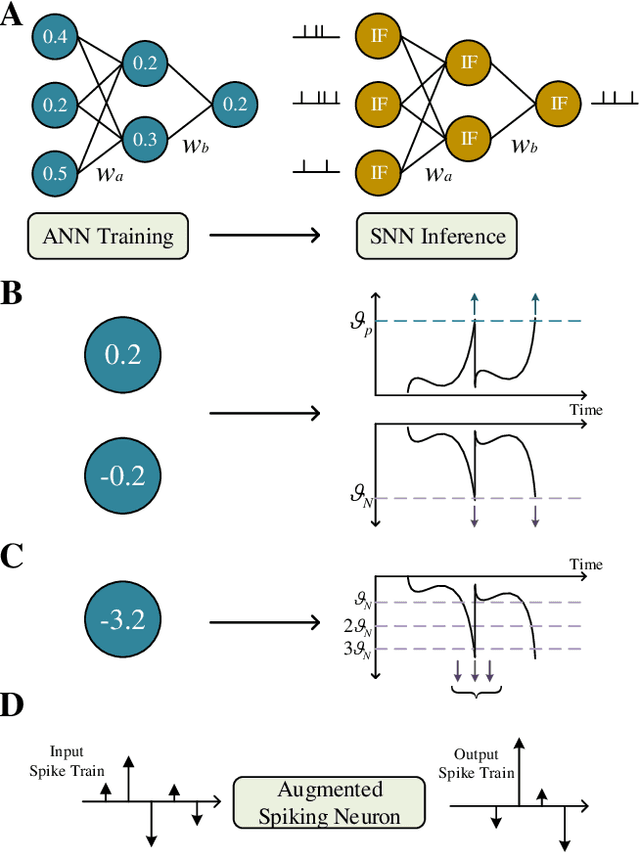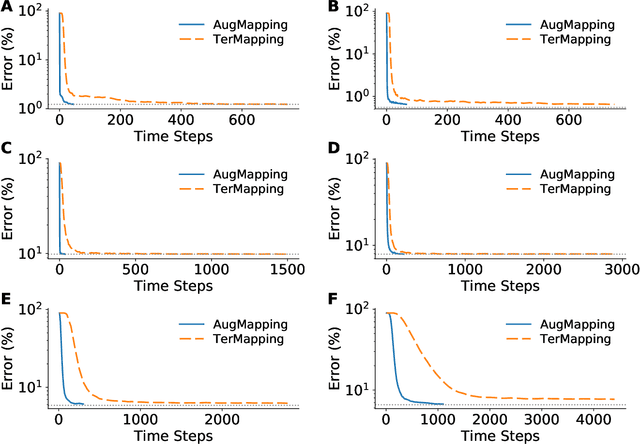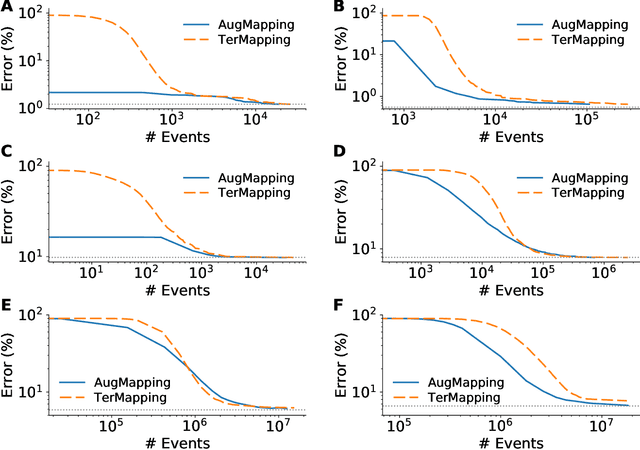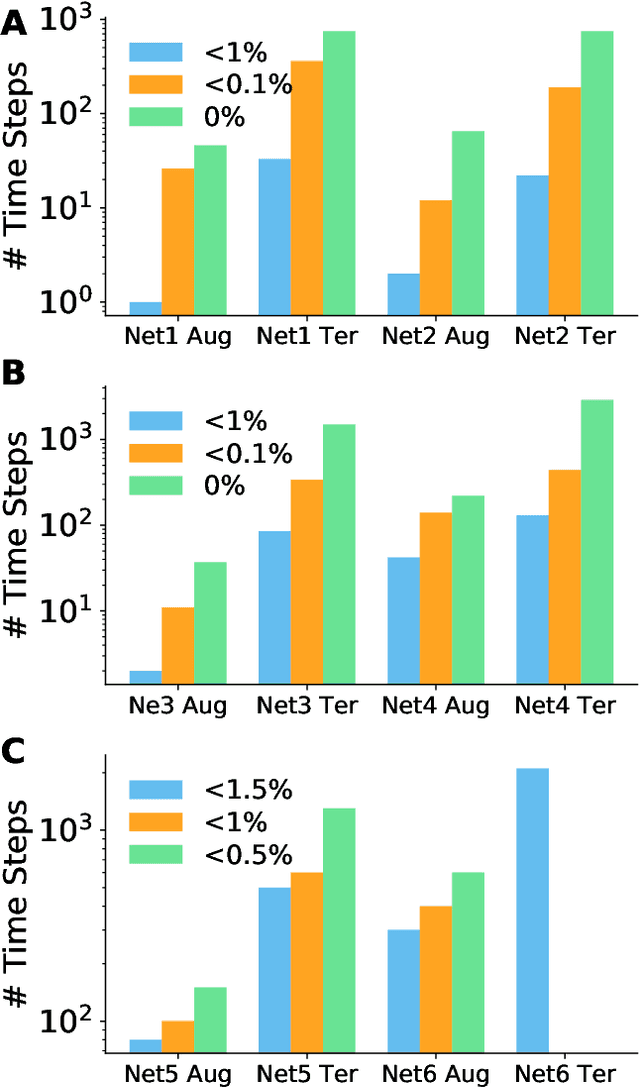Gaoyan Zhang
Locate and Beamform: Two-dimensional Locating All-neural Beamformer for Multi-channel Speech Separation
May 18, 2023Abstract:Recently, stunning improvements on multi-channel speech separation have been achieved by neural beamformers when direction information is available. However, most of them neglect to utilize speaker's 2-dimensional (2D) location cues contained in mixture signal, which limits the performance when two sources come from close directions. In this paper, we propose an end-to-end beamforming network for 2D location guided speech separation merely given mixture signal. It first estimates discriminable direction and 2D location cues, which imply directions the sources come from in multi views of microphones and their 2D coordinates. These cues are then integrated into location-aware neural beamformer, thus allowing accurate reconstruction of two sources' speech signals. Experiments show that our proposed model not only achieves a comprehensive decent improvement compared to baseline systems, but avoids inferior performance on spatial overlapping cases.
MIMO-DBnet: Multi-channel Input and Multiple Outputs DOA-aware Beamforming Network for Speech Separation
Dec 07, 2022Abstract:Recently, many deep learning based beamformers have been proposed for multi-channel speech separation. Nevertheless, most of them rely on extra cues known in advance, such as speaker feature, face image or directional information. In this paper, we propose an end-to-end beamforming network for direction guided speech separation given merely the mixture signal, namely MIMO-DBnet. Specifically, we design a multi-channel input and multiple outputs architecture to predict the direction-of-arrival based embeddings and beamforming weights for each source. The precisely estimated directional embedding provides quite effective spatial discrimination guidance for the neural beamformer to offset the effect of phase wrapping, thus allowing more accurate reconstruction of two sources' speech signals. Experiments show that our proposed MIMO-DBnet not only achieves a comprehensive decent improvement compared to baseline systems, but also maintain the performance on high frequency bands when phase wrapping occurs.
MIMO-DoAnet: Multi-channel Input and Multiple Outputs DoA Network with Unknown Number of Sound Sources
Jul 15, 2022



Abstract:Recent neural network based Direction of Arrival (DoA) estimation algorithms have performed well on unknown number of sound sources scenarios. These algorithms are usually achieved by mapping the multi-channel audio input to the single output (i.e. overall spatial pseudo-spectrum (SPS) of all sources), that is called MISO. However, such MISO algorithms strongly depend on empirical threshold setting and the angle assumption that the angles between the sound sources are greater than a fixed angle. To address these limitations, we propose a novel multi-channel input and multiple outputs DoA network called MIMO-DoAnet. Unlike the general MISO algorithms, MIMO-DoAnet predicts the SPS coding of each sound source with the help of the informative spatial covariance matrix. By doing so, the threshold task of detecting the number of sound sources becomes an easier task of detecting whether there is a sound source in each output, and the serious interaction between sound sources disappears during inference stage. Experimental results show that MIMO-DoAnet achieves relative 18.6% and absolute 13.3%, relative 34.4% and absolute 20.2% F1 score improvement compared with the MISO baseline system in 3, 4 sources scenes. The results also demonstrate MIMO-DoAnet alleviates the threshold setting problem and solves the angle assumption problem effectively.
Iterative Sound Source Localization for Unknown Number of Sources
Jun 24, 2022



Abstract:Sound source localization aims to seek the direction of arrival (DOA) of all sound sources from the observed multi-channel audio. For the practical problem of unknown number of sources, existing localization algorithms attempt to predict a likelihood-based coding (i.e., spatial spectrum) and employ a pre-determined threshold to detect the source number and corresponding DOA value. However, these threshold-based algorithms are not stable since they are limited by the careful choice of threshold. To address this problem, we propose an iterative sound source localization approach called ISSL, which can iteratively extract each source's DOA without threshold until the termination criterion is met. Unlike threshold-based algorithms, ISSL designs an active source detector network based on binary classifier to accept residual spatial spectrum and decide whether to stop the iteration. By doing so, our ISSL can deal with an arbitrary number of sources, even more than the number of sources seen during the training stage. The experimental results show that our ISSL achieves significant performance improvements in both DOA estimation and source number detection compared with the existing threshold-based algorithms.
Constructing Accurate and Efficient Deep Spiking Neural Networks with Double-threshold and Augmented Schemes
May 05, 2020



Abstract:Spiking neural networks (SNNs) are considered as a potential candidate to overcome current challenges such as the high-power consumption encountered by artificial neural networks (ANNs), however there is still a gap between them with respect to the recognition accuracy on practical tasks. A conversion strategy was thus introduced recently to bridge this gap by mapping a trained ANN to an SNN. However, it is still unclear that to what extent this obtained SNN can benefit both the accuracy advantage from ANN and high efficiency from the spike-based paradigm of computation. In this paper, we propose two new conversion methods, namely TerMapping and AugMapping. The TerMapping is a straightforward extension of a typical threshold-balancing method with a double-threshold scheme, while the AugMapping additionally incorporates a new scheme of augmented spike that employs a spike coefficient to carry the number of typical all-or-nothing spikes occurring at a time step. We examine the performance of our methods based on MNIST, Fashion-MNIST and CIFAR10 datasets. The results show that the proposed double-threshold scheme can effectively improve accuracies of the converted SNNs. More importantly, the proposed AugMapping is more advantageous for constructing accurate, fast and efficient deep SNNs as compared to other state-of-the-art approaches. Our study therefore provides new approaches for further integration of advanced techniques in ANNs to improve the performance of SNNs, which could be of great merit to applied developments with spike-based neuromorphic computing.
 Add to Chrome
Add to Chrome Add to Firefox
Add to Firefox Add to Edge
Add to Edge